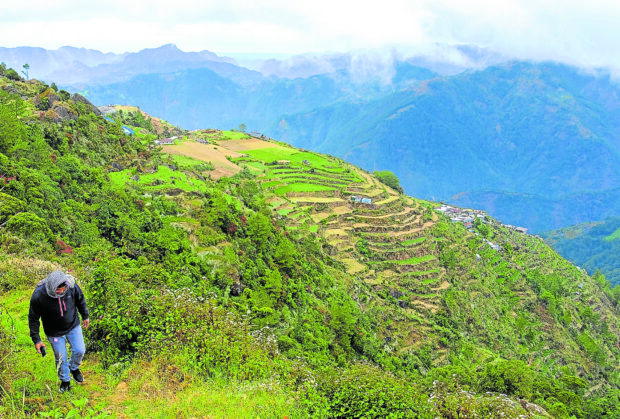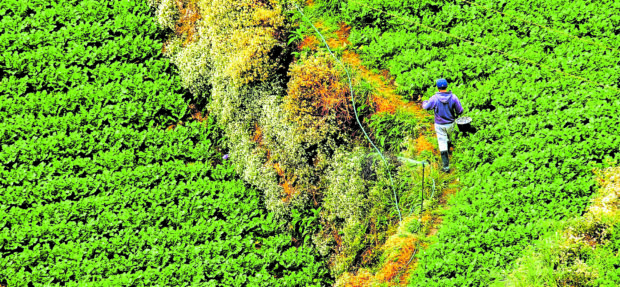Tech tapped in mapping farms, roads to boost food security

BAGUIO CITY — The country’s technology experts have started digitally mapping all food producing areas and their supporting public works infrastructure to help sustain food security and accelerate production, an information and communication technology (ICT) group said on Tuesday.
At this year’s ClickConex (2024 Convergence of Luzon ICT Champions Conference and Exhibition), Iloilo businessman Jessraf Palmares, president of the National ICT Confederation of the Philippines (NICP), said they commissioned Project Sarai (Smarter Approaches to Reinvigorate Agriculture as an Industry in the Philippines) of the University of the Philippines Los Baños to chart the condition of Philippine farms, including marine and other aquaculture food producers.
READ: PH to boost farming with space technology
Project Sarai is financed by the Philippine Council for Agriculture, Aquatic and Natural Resources Research and Development (PCAARRD) and has been using satellite technology to provide daily weather forecasts, monitor crops, and acquire applicable data to reduce the impact of extreme weather on farms in many regions. PCAARRD is an attached agency of the Department of Science and Technology (DOST).
NICP, meanwhile, is the umbrella organization of more than a hundred ICT councils operating in different towns and cities, representing both the public and private sectors.
The country harvests food from about 13.42 million hectares (ha) of agricultural land, but the sector grew only by 1.2 percent in 2023’s gross domestic product (GDP) on the back of improved poultry and livestock production.
That figure was up from the sector’s 0.6 percent growth in 2022, according to the DA in a February news release.
READ: Bongbong Marcos orders geomapping of agri lands to boost production
It said last year’s growth was also influenced by “record rice harvests of 20.06 million metric tons (MT),” which lowered rice imports from 3.8 million MT in 2022 to 3.5 million MT in 2023.
DA also said farmers employ “25 percent (12.425 million) of the 49.7 million Filipinos in the labor force as of November 2023.”

‘Serious problem’
“We have a serious food security challenge in the country,” said Bukidnon businessman Roberto Tinsay, a member of the NICP board of trustees, during a news conference.
“Sarai is a Filipino platform that has been using satellites to get farm-precision data on the ground. Simply speaking, if you have no data, you cannot manage anything,” Tinsay said. Currently, 56,000 ha of plantations in Bukidnon grow coffee, sugar, rice, corn, and cacao, he said.
However, Project Sarai would need the consent of a local government unit (LGU) before it could proceed with mapping activities there, Tinsay said.
The local government would need to shoulder part of the cost as its counterpart to the national government grant used by Project Sarai, he said.
Tinsay has opened talks regarding prospective technology partnership deals with the Department of Agriculture and the Department of Agrarian Reform, Palmares told the Inquirer.
Palmares said he talked to Agrarian Reform Secretary Conrado Estrella III and they discussed how to introduce digital technology to increase agrarian land productivity.
“We are also working with the University of Asia and the Pacific to come up with a framework as to how we will approach innovation from the point of view of the private sector,” Palmares said.
He said the framework would harness technology that has predictive capabilities concerning the weather and that identifies suitable crops for certain regions.
“We have to approach farming in a scientific way,” he stressed.
Palmares said NICP is helping the government “cultivate an atmosphere that is favorable to the progression of Filipino technology.”